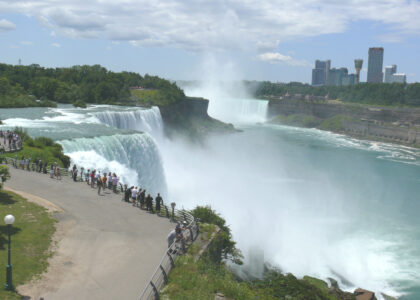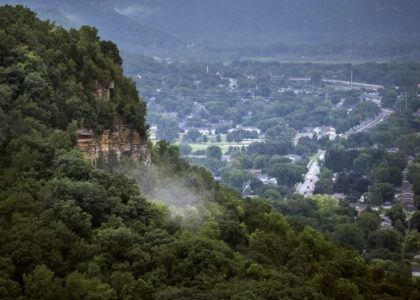Welcome to the Stairway to Heaven of Cuilcagh Mountain, a remarkable boardwalk that has become one of Northern Ireland’s most iconic hiking trails. While the modern boardwalk that we see today was constructed in 2015 to protect the sensitive bogland from erosion, the history of the Cuilcagh area stretches back much further. Cuilcagh Mountain, part of the Marble Arch Caves Global Geopark, has been a site of natural and cultural significance for centuries.
The mountain itself is a part of the larger Cuilcagh Mountain Park, a protected area that was established in 1998. This park is notable for its rich biodiversity, including rare plant species and unique geological formations, largely formed during the last Ice Age. The mountain stands at 665 meters, making it the highest peak in both Fermanagh and Cavan, straddling the border between Northern Ireland and the Republic of Ireland.
In terms of human history, the surrounding region has evidence of Neolithic activity, with ancient burial cairns and stone structures scattered across the landscape. These remnants tell stories of the early settlers who revered this land. The mountain was also historically significant as a boundary marker and has been mentioned in various local legends and folklore.
The boardwalk, often referred to as the ‘Stairway to Heaven’, was built not only to offer hikers a route through the bogs without damaging the ecosystem but also to provide stunning views of the surrounding countryside. Since its construction, it has attracted visitors from around the world, drawn by the breathtaking vistas and the challenge of the climb.
As you walk the path, imagine the generations before who traversed these lands, the ancient communities that called this rugged terrain home, and the countless stories that have unfolded here. The Stairway to Heaven serves not just as a physical path to the peak but also as a metaphorical journey through time, inviting each visitor to reflect on the natural beauty and historical depth of Cuilcagh Mountain.






